Raw Food Diet for Old Dogs
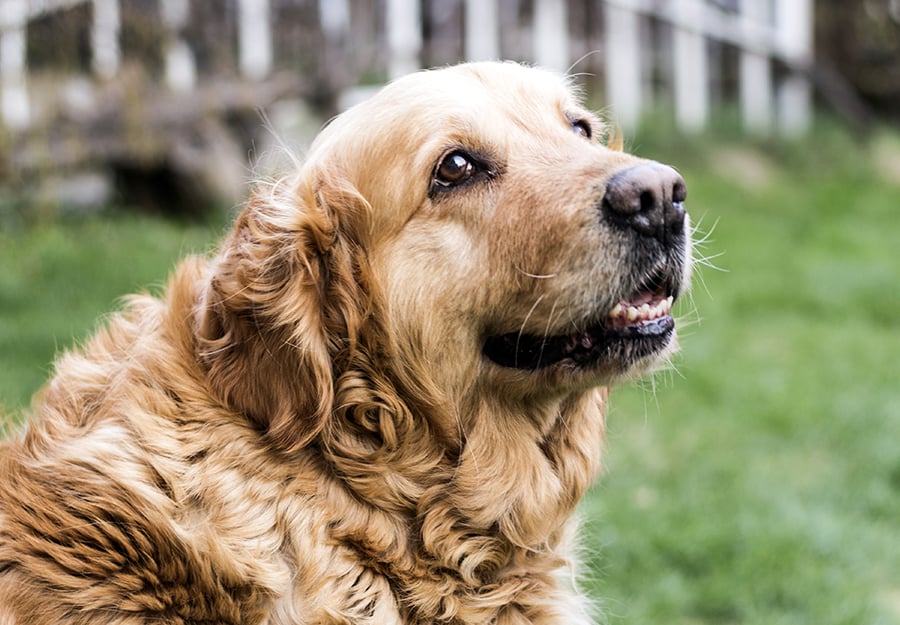
For dog owners, the reality that our pets live such short lives means that we do everything we can to make our time together count. To ensure that their later years are as comfortable, healthy, and happy as possible, we need to make healthier decisions when choosing dog food for our senior dogs. If you have a senior pet, you might be wondering what you can do to preserve your old dog's quality of life. This article will help you understand the needs of senior dogs so that you can make the best feeding decisions for them. Here's a quick breakdown of what we'll cover: Pets age differently depending on breed, size, genetics, and environment. The huge variety of breeds and cross-breeds can make it difficult to determine at what age a dog enters their senior stage. Whether discussing larger or smaller breeds, different factors can ultimately determine your dog's expected lifespan. This is why it's extra important to keep an eye out for signs or symptoms of age-related decline. The signs may not be obvious, in fact, they are often quite subtle and easy to miss until they are well advanced. There are many factors that can determine when your pet needs to be cared for as a senior, but the most common standard is about 7. For most dogs, small to large breed, this is around when you may start noticing more advanced signs of age. While this standard is true for many, it's often inaccurate for breeds of more extreme size. Very small breeds like Chihuahuas and Pomeranians can live an average life span of 15 years or more, so considering them a senior at seven may be a little premature. It is important to note that because of their longevity, small breeds do often suffer aging symptoms for longer periods of time, so considering them a senior at nine is more accurate. Giant breeds, typically dogs over 100 lbs. live shorter lives. We are constantly finding new ways to keep our pets healthier for longer, but the sad fact is that some large and giant breeds may only live for about 8-10 years. For an average large breed, like a Labrador Retriever, senior symptoms don't tend to present too heavily until close to 7, but the larger the dog, the earlier they will reach that stage of life. Mastiffs, Great Danes, and other giant breeds will reach the beginning stages of old age as early as 4-5. Recognizing when your pet might start feeling the effects of aging will ensure that you can navigate their final years and keep them healthy, comfortable and happy. Check out this chart to give you a simple guideline to help you visualize what your dog's age means. While every dog is different and can present unique symptoms to varying degrees, there are some common age-related symptoms that you should keep in mind. Not every dog will fit these categories. Staying active is one of the best ways to prevent health issues related to age. If you notice a difference in your pet's energy levels, stamina, or desire to play, you should take action. A decrease in activity levels could indicate pain from arthritis, or other hip and joint-related issues. As they age, keep their physical activity shorter but frequent and consistent. If you need to decrease your old pups walk around the block instead of all the way around the neighbourhood, bump the routine up to twice a day instead of only once. Try not to overexert them. Aging cannot be reversed, so you will need to permanently adapt your routines to accommodate these routine changes. Obvious mobility issues, like stiff joints after a walk, difficulty getting up and downstairs, or an increase in lazy behaviours, need to be taken seriously. Maintaining your dog's routine while being sensitive to their limitations is important. Take a look at their diet and make sure that they are getting healthy natural sources of all of their essential nutrients . Talk to your vet to determine if medications may be needed to reduce inflammation to support the joint. Over-the-counter hip & joint supplements, like glucosamine and chondroitin, can be used to prevent or, at least, slow further deterioration of connective tissues around the joint and can reduce inflammation to aid in mobility. Dogs that are showing more advanced signs of mobility issues may need to have their environment altered to accommodate their limitations. Consider ramps or pet stairs to help them get onto furniture, beds, and into your vehicle, or remove access to these areas altogether. Changes in weight can be an indicator of age too. If your dog is gaining weight due to inactivity, you may need to increase playtime or try to encourage your dog to be more active in small spurts. Weight loss issues should also be taken seriously. Limited mobility or activity can lead to muscle depletion, which can compound into more health issues. Muscle is required to support joints, so a loss of muscle mass can be connected with many mobility problems. Diet can help significantly, so make sure your dog is eating a highly digestible diet with appropriate sources of animal protein to counteract muscle loss. These diets will be more calorie-dense and maintaining physical activity and portion control are both very important. Special recipe dry dog food for example can be highly effective using ingredients like a farm-raised chicken while avoiding things like corn and wheat. Just like with our own diet plans, no matter how healthy your dog eats, it will not replace an active lifestyle. Gear physical activities to your pet's needs. Try not to push them too hard, but always encourage appropriate daily exercise to maintain muscle. As dogs age, their natural gut flora changes and they often have trouble repopulating healthy bacteria and digestive enzymes. The fact is that time leads to a decrease in organ function, and many organs play vital roles in the digestive system. The food that they have been fed for years may start to cause inconsistent stool quality, as well as gas. This could indicate that a diet change is required, or that a digestive supplement should be added into their routine. Diets made from natural and highly digestible ingredients are best for any dog but are especially important for senior dogs. Senior dogs tend to show more skin and coat issues than younger dogs. Regular grooming and even daily petting can help to identify lumps, dry skin, hair loss and changes to your dog's fur texture. Some pets show aging in the colour of their fur, like grey or white muzzles, and dulling of their natural lustre. This could be related to diet and can often be managed with the appropriate balance between amino acids, vitamins, minerals, and omega fatty acids. When your dog isn't finishing their meals like they used to, or they are skipping meals entirely, it could be due to their age. As they start to slow down, you may find that they just aren't as hungry. Some dogs are good at controlling their calories, especially if you are free-feeding. Still, a loss of appetite could be a symptom of another age-related issue, like pain. Pain, anxiety, and discomfort from digestion issues can deter your dog from eating with the typical gusto that they used to. Proper eating routines are extremely important, so if your pet is consistently skipping meals or is having trouble eating, a vet visit is warranted. Like humans, many of your dog's senses can be affected by age. Vision and hearing problems are among the most common. You may see your dog bumping into things, or not responding when you call or give a command. This behaviour is often viewed as a mental health deterioration, which can also happen in old age, but look to support the physical symptoms first. This may require you to move furniture to widen pathways. Moving playtime to more open areas, or considering different vocal methods to get your dog's attention can help keep them safe. Here are some helpful resources: We rarely consider mental health when we think of our pet's aging, but the brain is an organ too, and it can be ravaged by time just the same as any other organ. Aggression, fear, anxiety, and other changes may manifest in your pet. You might find that they don't like certain activities anymore, or react differently to guests entering the house. While this can seem scary, just imagine how scary it is for them. Managing a consistent routine, and implementing gradual change will help prevent extreme behaviour, and can help your pet feel safer. Significant changes like moving, travel, and introducing new family members, either furry or human, can be much more challenging with a senior pet, so make sure you properly prepare for these transitions. To answer this, you need to understand your dog's current physical and mental state. Just like people, your dog's routine needs to be adjusted according to what they are currently capable of. A lazy, old dog can't just jump into an advanced physical routine without overexerting itself. Adjustments need to be made slowly. Think baby steps. The less active your pet currently is, the slower you will need to introduce new activities. In this article, What Does My Dog Need, we clarified different classifications of activity level in dogs: While these categories still stand true for senior pets, the types of physical activity and playtime may change. A 30 minute run for an active dog, might be a 30-minute walk for a senior. A high-energy game of fetch in the backyard might be a slow game of hide and seek instead. If you have a senior pet that is still quite spry, that's great. Maintaining physical activity should be a breeze, but make sure you monitor your pet in the hours or days after high-energy playtime. This is when you might notice some mobility issues developing, and is a good indicator that you may need to shorten or break up playtime a little. For most senior dogs, dividing playtime into shorter segments and spreading them throughout the day is a great way to maintain their activity level without taxing their bodies too much. So, how active should your senior pet be? Start with their current activity level and start making small adjustments as needed. No one method works for every senior pet because every pet is different. Adjust your dog's routine to find out what works best for them. Talk to your vet about your senior pooch. A thorough assessment of their physical state can help your vet make recommendations for diet and exercise routines. Back to top Is there more to senior dog food than the name on the packaging? When comparing an adult or all-life-stage diet to one labeled as senior dog food, you may not see a noticeable difference. In this example, there are only three ingredients in the senior formula that aren't in the adult version: pea fibre, flaxseed, and glucosamine hydrochloride. The addition of these ingredients helps to improve digestibility, reduce inflammation, and support joint function. These ingredients help to fortify this food to suit many pets showing some age-related symptoms, but don't assume that all senior dog foods are the right food for your dog. Commercial pet foods are incredibly generalized and may not accommodate all of your dog's needs. We often take for granted how similar a senior pet's needs are to a puppy's . The same systems need to be looked after, and change is constant, albeit in the opposite direction. The fundamental similarities of puppy and senior dog foods lie in the food's ability to support critical systems of their bodies. Physical health, such as muscle development, cognitive function, and organ function, should all be considered when choosing a diet for your senior pet. Healthy brain function will support other systems in the body. As our pets age, deterioration of cognitive function can lead to a compromise of many systems in the body. A healthy, natural diet will provide all of the nutrients that your dog's body needs to provide energy to all of its systems, including the brain. Some nutrients may be required in higher quantities, though. EPA and DHA are two of the essential omega fatty acids that your dog needs in his diet. Both are omega 3 fatty acids and are sourced most abundantly from fish oils. DHA, in particular, aids in cognitive support, and higher levels of this omega fatty acid are required for senior pets. Antioxidants have also been studied . Enriching a senior pet's food with antioxidants-rich ingredients can help decrease the cognitive decline generally associated with age. Antioxidants are found in many fruits and vegetables. Berries, broccoli, tomatoes, and many dark leafy greens have a higher abundance. Most high-quality adult dog foods do contain these super-powered nutrients, but a senior pet may require higher quantities. More natural sources of DHA may also be needed to prevent deterioration over time. Look for senior dog food or all-life-stage diets that contain elevated levels of DHA to support your old dog's needs. It's a common myth that older dogs need protein restrictions to maintain kidney health and avoid kidney disease . In reality, it is the quality of the protein, not the quantity that should be monitored. Kidneys are incredibly resilient organs. While they are one of the organs that can fail in their senior years, this can be attributed to several things, like pollutants, poor diet and digestion, dehydration, and genetics. As our pets age, vets will monitor organ function more closely than in younger years, and early signs can be seen through blood work and other routine tests. To act preventatively, choose a diet that offers natural, fresh (whenever possible), and minimally processed animal proteins. Many commercial foods are heavily processed, which can denature the nutrients and make it harder for your dog to digest properly. Minimally processed diets like raw, baked, dehydrated, or freeze-dried foods will leave more of the nutrients intact and in a more natural state. Most importantly, avoid heavily rendered by-products and foods that rely heavily on carbohydrates to provide protein. We often turn to low protein diets as the answer to weight issues and calorie restrictions, but that isn't the most effective way to maintain an old dog's weight. Of course, animal protein does provide higher levels of protein and fat, which contribute to the food's calorie density. This leads many owners and manufacturers to lean towards lower protein and fat diets for senior pets, but this can also lead to muscle depletion. Muscles cannot be built or maintained without a healthy protein source in their diet. Severe protein restriction can actually be a catalyst in the aging process. Proper feeding guidelines and a routine exercise plan should be implemented to avoid inappropriate weight gain. Many systems in your dog's body will start to work less efficiently as they age, including their digestive system. This means that many of their essential vitamins and minerals can be harder to digest and utilize. To combat this, always feed diets that have natural sources of vitamins and minerals, like fresh produce, instead of foods that rely on synthetic additives to meet minimum requirements. Even in an extruded kibble, using fruits and vegetables to provide essential nutrients will allow your dog's body to use those nutrients better to stay healthier for longer. Fresh is always the best, so adding fresh produce to your pet's diet plan, either with meals or as treats, can make a difference in your dog's health. Different breeds have different nutritional requirements, and a lot of that has to do with size. A diet plan that is suitable for a Mastiff will likely not be the right food for a Pomeranian. This doesn't mean they can't eat the same food, but it does mean that quantity, format, and frequency of meals may have to be altered to suit their needs. Large breeds often have a slower metabolism than small breeds, so they most likely won't require as many calories by weight. Small breeds have a speedy metabolism, and their diets should be more calorie-dense to accommodate their base caloric needs. This will, of course, be dictated by the animal's activity level. Indoor dogs, which are commonly small and toy breeds, may live much more sedentary lifestyles. Lower feeding guidelines are needed with calorie-dense foods. Large breeds also have different calcium and phosphorus requirements to maintain their skeletal structure. Feeding a diet not designed for large breeds may require supplementation of bones, marrow, or organ meats to provide support. Not every pet falls under the blanket of each size, breed, or age group, so talk to your vet about what your dog's unique nutritional requirements are. All life stage foods are everywhere. It seems many brands of kibble are steering towards this fad, but is an all-life stage food really suitable for all life stages? In short, often, but not always. Many foods are formulated to meet the minimum AAFCO nutrient profiles, which help ensure that your pet's food meets the minimum nutritional requirements for dogs. While this has been deemed suitable to support base health, it is far from an ideal quality standard. Typically an all-life-stage food would need to contain your dog's complete omega fatty acid, vitamin, and mineral requirements. These are designed to support your dog from puppy years through their geriatric stage. For dogs with more specific needs, these diets may not be 100% complete and balanced. All-life-stage food may look less desirable than a diet that better suits your dog's unique senior needs. Check out our complete Dog Food Guide for more tips for finding the best diet for your old pooch. Different formats of food may suit dog's nutritional needs as they age. Check out Types of Dog Food, to learn more about the benefits of each food type and how it may help support your old dog. Kibble is a good choice for pet owners looking for convenience. As pets age, they sometimes lose their passion for food, and owners often resort to free-feeding to allow their pets to graze when they are hungry. Kibble is the best diet choice for that style of feeding as you don't need to worry about it going bad and making either the dog or anyone else ill. Be cautious of the ingredients though. Kibble can be very carb-heavy, which can be fine for an active dog, but a slower senior may need fewer simple carbs in their diet to maintain a healthy weight and digestion. The taxing process of kibble extrusion can also degrade nutrients, making them near unrecognizable by your dog's body. This can lead to deficiencies that can affect organ function and energy levels over time. If you do prefer feeding kibble, look for a baked kibble, like Stella & Chewy's. They aren't pressed as firmly and they are cooked at a lower temperature. This both preserves essential nutrients and enzymes, as well as makes the kibble easier to chew and digest. A final note on kibble is its moisture content. Kibble on average has a moisture content of about 10% or less. For most pet's this is not enough moisture to hydrate them properly. It's vital to encourage your pet to drink plenty of water, and offer other moist foods or broths to compensate. Dehydration can lead to a number of problems, but most commonly, digestion and urinary health can suffer the quickest and most noticeably. Canned foods are a good choice for a senior diet. It solves many of the issues presented with a kibble diet and is a great way to encourage picky eaters to eat more. Wet foods are generally more digestible than kibble, depending on the ingredients of course, and many options have very little carbohydrates or fillers. The moisture content alone improves digestion compared to a similarly formulated extruded kibble option. When feeding a solely wet food diet, it's extremely important to consider your dog's dental health. Without the abrasion from chewing, a daily, (yes daily!) dental routine must be implemented. Senior pets especially need an appropriate dental routine, as their teeth are already feeling the effects of time, so tooth brushing as well as water or food additives, or other dental routines need to be in place to ensure bacteria does not fester on and around the teeth. Being the least processed and most natural food format, raw is a good fit for just about any dog of any breed of any life stage. That being said, there are dogs who may not thrive on raw due to certain illnesses, organ function issues, and preference. Raw diets are considered all life stages, but are typically more balanced than a heavily processed diet, making them more suitable for a variety of life stages. Feeding guidelines are especially important when feeding a raw diet because they are very calorie-dense and it can be easy to put unnecessary weight on your pet. Feeding guidelines for raw may vary depending on the formula, but the standard guidelines are based on a percentage of your pet's weight based on their life stage and activity level. In terms of dog food for senior dogs, you should start by feeding about 2% of their body weight, and adjust to suit their needs and activity. A 50lbs senior dog of moderate activity level would be eating roughly one pound of food per day. If that same dog had weight issues or was not as mobile due to joint issues or injury, you might start them at ¾ lbs until you are able to slowly increase activity to balance their food with their calorie intake. Raw meaty bones are also recommended for raw feeders. It's common for a raw diet to have ground bone in it, but feeding a small portion of additional bone can supply more calcium and phosphorous, not to mention the dental health benefits of natural chews. Freeze-dried dog food for senior dogs is a format in the raw food category that has become quite popular among pet owners. It holds many of the same benefits a frozen or fresh raw food, as long as it is being fed re-hydrated. This format is sought after for pet owners who are looking for less cumbersome raw food. While prep work is still involved, it's easier to portion out and doesn't require valuable freezer space to store. Freeze-dried foods are a little more versatile too. It can be used as a meal topper or high-value treat due to its meaty flavour. Lastly, some pets find freeze-dried more palatable than raw food. This can be attributed to both temperature and texture. Freeze-dried is finely ground to make it easy to re-hydrate and digest and can be prepared with room temperature water, as the coldness of raw can be off-putting for some dogs, especially if they are new to raw feeding. Dehydrated foods are often lumped together with freeze-dried and raw diets, but there is a variety of formats under the dehydrated umbrella. The most notable is that not all dehydrated foods are raw. While many are, brands like The Honest Kitchen, gently blanch their ingredients before dehydration. This method retains flavour, and the majority of the nutrients in the food, while still cooking the ingredients to eliminate bacteria. This food type is preferred by pet owners who do not wish to handle raw food. For senior dogs, dehydrated foods are a great choice to encourage a picky dog to eat more. These foods can be much lower in carbohydrates than a kibble diet, so they have more natural ingredients that are easier to digest, which is ideal for seniors. The final food format for senior dogs is the elusive homemade diet. Homemade diets are often turned to for dogs that are already dealing with health issues, but any dog of any age can thrive on a properly formulated homemade diet. For many senior pet owners feeding a homemade diet, the customization of the diet is the biggest benefit. Whether your pet is ill, itchy, has poor digestion, or is just incredibly particular about what they will eat, homemade foods can be modified to match the individual dog. The challenge falls in the formulations. A complete and balanced diet can be tricky to achieve, especially if you are trying to limit or eliminate synthetic additives like vitamins and minerals. It is always recommended that you discuss homemade diets with your vet to ensure that you aren't missing anything that could lead to a deficiency. Integrative or holistic vets are often well versed in canine nutrition and might be able to supply some helpful resources for crafting your pet's gourmet meals. Helpful Resources: Regardless of the type of food that you are feeding your dog, they still need to be fed an appropriate amount to ensure that they are receiving the correct amounts of all of their essential nutrients. It's a term we are all familiar with - calories in must equal calories out. While it's not exactly an all-encompassing term, it does make the point that we should be cautious of feeding our pets more calories than they are capable of using. As our pets age, it's common for them to slow down. Weight and activity levels should be monitored to help you identify the need for a change in diet, feeding guidelines, or routine. While not every senior dog will slow down the same way, you should be prepared for subtle changes, and be able to respond accordingly. If you take a look at your pet's food, unless you feed homemade, you will see a chart of feeding guidelines. More often than not, the manufacturer will provide guidelines for different life stages or even different activity levels. WEIGHT *Feeding guidelines taken from FirstMate all life stages dry dog food These guidelines are often a great starting point, but if you recognize that your pet does not fit the 'average' dog mould, then you might want to adjust those little by little. In cases of extreme sedentary lifestyles or weight issues, you may need to feed your dog as much as 50% less than the feeding guidelines for your food. While this is not common, it is a testament to the vagueness of feeding guidelines. If you are unsure, it's smart to connect with your vet. They can help you calculate how many calories your dog needs, and determine how much food you should feed per meal. They can also help you account for treats and chews, and activity to help best manage your pet's dietary needs. At any age, free-feeding can be a tricky feeding style to master. For starters, actual free feeding is a bit different than what most people assume it is. The idea behind free-feeding is to allow your pet to judge their own calorie intake based on their activity level. The concept seems pretty outrageous to any pet owners with superfood motivated dogs, but for some, it's actually quite effective. To properly free feed, you need to allow your dog to eat as much as they would like until they stop eating or walk away (within reason, of course). Remove the food and don't offer it again until the next scheduled feeding time. If they don't eat enough, they will be hungry before the next feeding and will eat more to maintain energy levels. There is, of course, some trial and error involved in this process, but the method works well for a lot of working dogs. This can help them accommodate different activity levels on different days. They may choose to eat a little bit extra on a day that involved more activity than usual, and they may choose to eat less fervently on a day of napping in front of the tv. The 'free-feeding' method that is more commonly used is to simply leave food out all the time. We sometimes refer to some dogs as 'grazers' and while it may seem like an ideal solution to their unusual eating preferences, it can also be related to weight issues, both under and over. If you choose to free feed, try the actual free feeding method. You may see better results and happier, healthier eating habits in your pet. What your dog eats will, obviously, have a huge impact on their health, but how they eat is important too. Look at your dog's eating habits for signs that they might need a change. When determining the best mealtime routine for your pet we often make decisions around our own schedules, but those aren't always the best choices for our pets. Our schedules can be more fluid depending on our day to day needs and responsibilities, but our senior pets will benefit from a stricter routine than that. Scheduled feeding times should be consistent to allow your dog's body to properly utilize their calories. Other routines like exercise, playtime, and bathroom breaks should also be consistent. The more normal and consistent their routine is, the easier it will be to maintain as they age. Every dog is different and has different habits. This is especially true for eating. Take a close look at how your dog eats. If your dog is a gulper, has trouble chewing or swallowing, or is limited in mobility, their bowl might need to reflect that. Most bowls are a pretty standard shape and size, but some variations may actually improve your pets eating habits. Check out some of the unique food bowls to help your pet eat better. BeOneBreed Messy Mutts Beco Pets The weather can affect your dog's appetite. Senior pets are especially sensitive to extreme hot and cold, so a sudden change in temperature may trigger a hiatus from food. Hot weather can affect dogs differently. Some start to get more active, while others feel drained by the heat. If you don't have air conditioning, or if your dog is double-coated, they may not have their typical appetite. While skipping a meal, or eating less is normal, you should definitely monitor your dog during these changes. You may need to find a way to help your pet regulate heat better if these changes were triggered by extremely warm weather. One meal is fine, but if your dog is going more than a day without eating, it could be a symptom of something else. Talk to your vet to determine whether or not a vet visit is warranted. While training a puppy may seem like a challenge, maintaining your senior dog's training should be much simpler. Work with tricks that they already know, and slowly expand. Finding ways to treat when your dog is on a restricted diet can be tough, but incorporating training time cannot only provide mental stimulation but help make sure that your pet is working off those extra calories. If you are feeding extra treats during training, those calories need to be taken into account. You may need to modify feeding guidelines or increase activity to find a balance. Keeping your dog thinking, even into their senior years, will keep them healthier in the long run. Think of the brain like any muscle in your body. If you stop using it or stretching it, it will eventually start losing function. Keep your dog active both mentally and physically! For senior dogs that are losing interest in food, and even food-obsessed dogs, making a game out of mealtime can encourage healthier eating habits. Using the shell game, hide-and-seek, and incorporating training can encourage your dog to eat their meals at a more appropriate speed. Check out Symptoms and Solutions for Dog Boredom for some great tips on making food fun and engaging. It is possible to find food that has everything that your old boy needs, but depending on their condition, you may need to supplement their diet to improve different aspects of their health. Even on a high-quality diet, your senior dog may need a little extra help. Check out some great supplements that can aid your pet during their senior years. For many dogs, supplements may not even be necessary if they are on a well-balanced and appropriate diet. If you aren't sure whether or not your dog needs a health supplement, connect with your vet. Over supplementing can be harmful, and more often just a waste of money. Any type of drastic change in your pet will warrant a vet visit. At an advanced age, conditions can worsen quickly, so if you notice something out of the ordinary, it's not a bad idea to talk to a vet about it. Many common illnesses that affect senior dogs can relate to digestion, kidneys, liver, heart, and cancer. Routine checkups are especially important for senior dogs, including blood work and urinalysis. These tests can identify early warning signs of more serious illnesses. Prevention is important, and many conditions can be managed through diet and medication if caught early enough. Check your dog regularly for lumps and bumps, monitor their routine, take note of changes to stool and urine, and track their activity, mobility and daily habits. The earlier you detect changes, the earlier you can respond and support your dog through this stage of life. Every dog has different needs and seniors dogs often have more specific needs than most. Tell us how you support your senior dog's needs in the comments below! Quick Navigation
Signs that Your Dog is a Senior
At what age is your dog typically considered a senior?
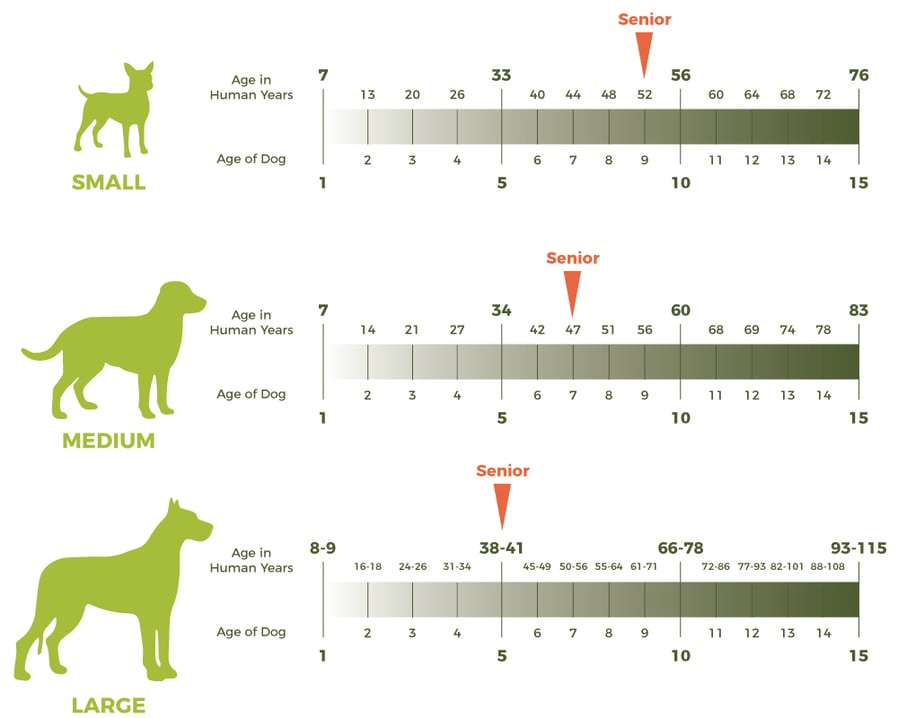
Symptom of Senior Dogs
Decreasing Activity Levels
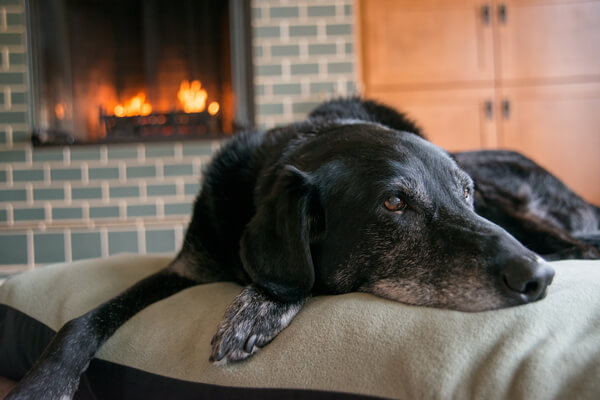
Mobility Issues
Weight
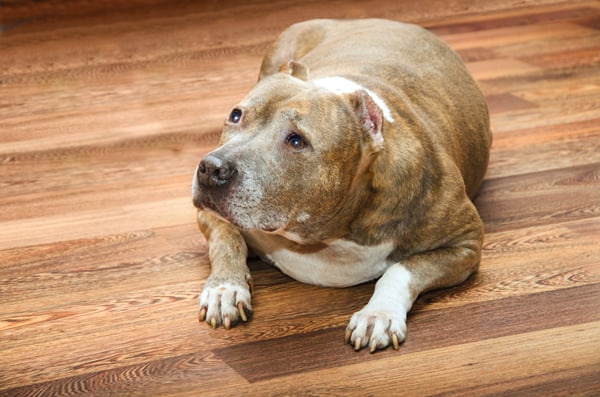
Digestion
Skin and Coat
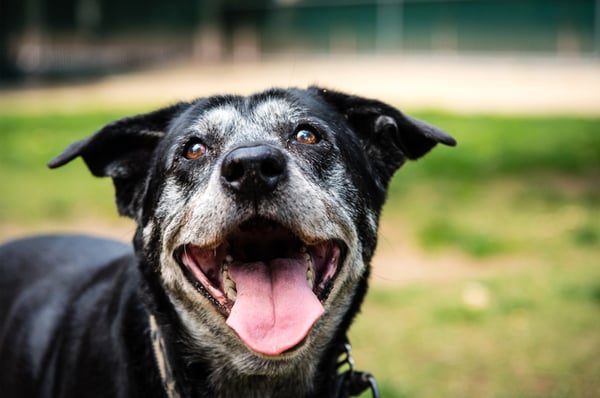
Loss of appetite
Vision/hearing problems
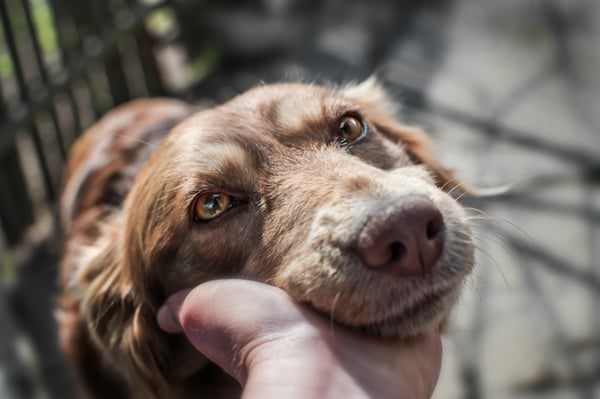
Behavioural Changes
How Active Should Your Senior Dog Be?
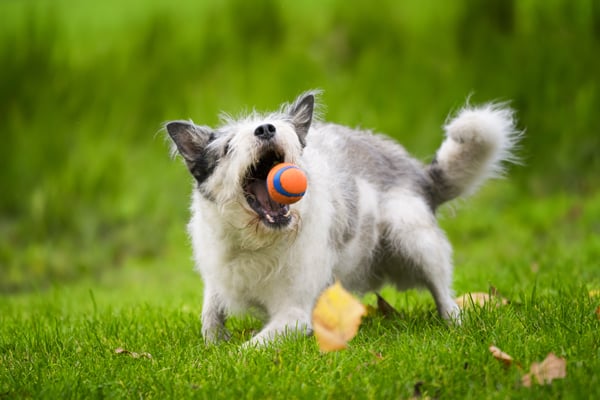
A happy puppy doesn't know that they're going to be sore after a jaunty sprint at the dog park. It's up to us to make sure that we are encouraging appropriate exercise.Senior Dog Food vs. Regular Dog Food
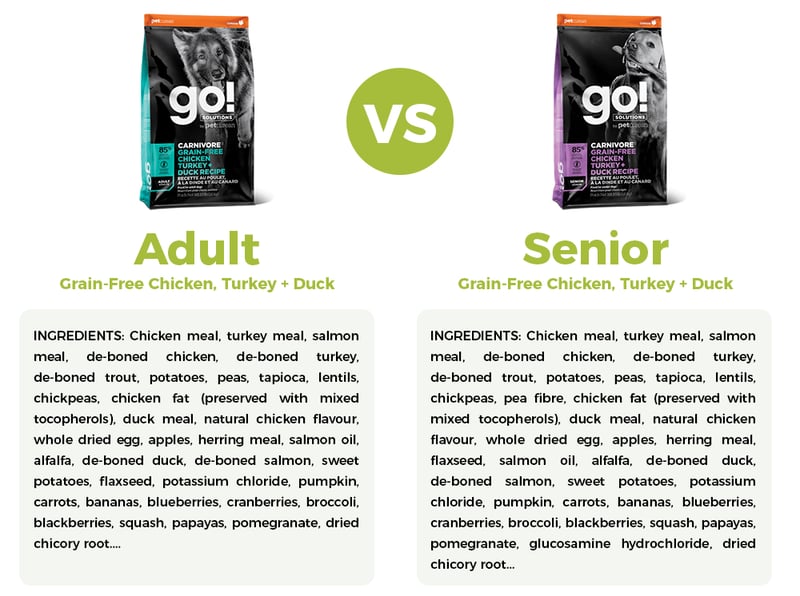
Nutritional Requirements of Senior Dogs
Brain Support
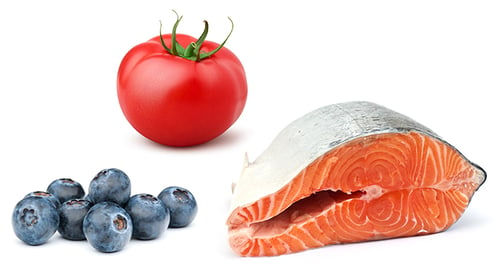
Protein Restrictions in Senior Dog Food
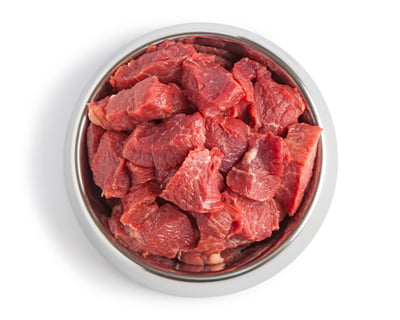
Natural Nutrients
Size Matters
All Life Stage Foods

Choosing the Right Type of Food for a Senior Dog
Kibble
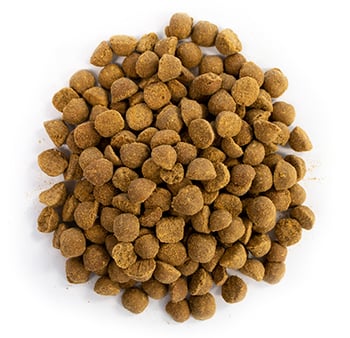
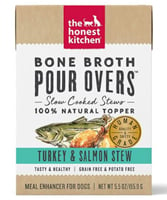
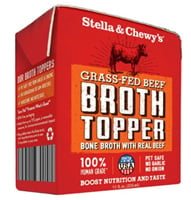
Wet Foods
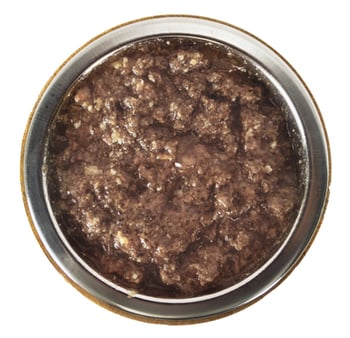
Raw
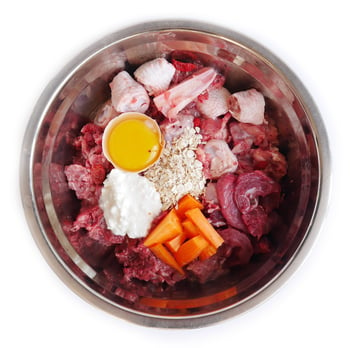

Freeze-Dried
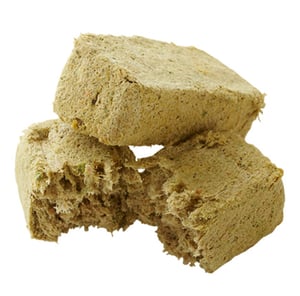
Dehydrated
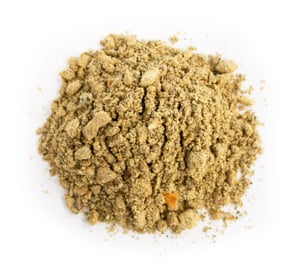
Homemade
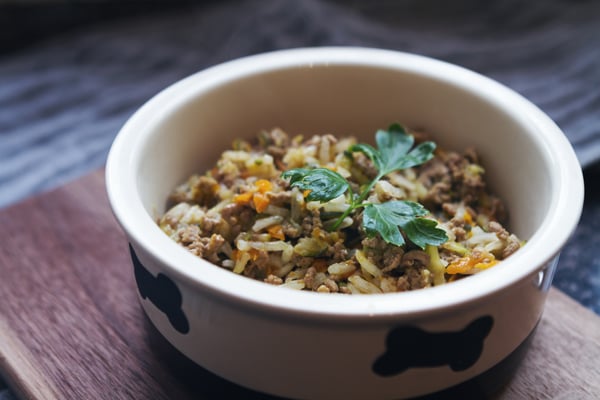
How Much Should You Feed Your Senior Dog?
Calories In VS. Calories Out
Feeding Guidelines
SENIOR ADULT PUPPY 2-5 lb (1-2.3 kg) 1/8-1/4 cup (19-39 g) 1/8-1/4 cup (19-39 g) 1/8-1/4 cup (19-39 g) 5-10 lb (2.3-4.5 kg) 1/8-1/4 cup (19-39 g) 1/4-1/3 cup (39-52 g) 1/4-1/3 cup (39-52 g) 10-20 lb (4.5-9 kg) 1/4-1/2 cup (39-78 g) 1/3-2/3 cup (52-103 g) 1/3-3/4 cup (52-116 g) 20-30 lb (9-13.6 kg) 1/2-3/4 cup (78-116 g) 2/3-1 cup (103-155 g) 3/4-1 ¼ cups (116-194 g) 30-50 lb (13.6-23 kg) 3/4-1 ½ cups (116-233 g) 1-1 ¾ cups(155-271 g) 1 ¼-2 cups (194-310 g) 50-70 lb (23-32 kg) 1 ½-2 cups (233-310 g) 1 ¾-2 ¼ cups (271-349 g) 2-2 ¾ cups (310-426 g) 70-90 lb (32-41 kg) 2-2 ½ cups (310-388 g) 2 ¼-3 cups (349-465 g) 2 ¾-3 ½ cups (426-543 g) 90-110 lb (41-50 kg) 2 ½ -3 cups (388-465 g) 3-3 ¾ cups (465-581 g) 3 ½-4 ¼ cups (543-659 g) 110-140 lb (50-64 kg) 3-4 cups (465-620 g) 3 ¾-4 ½ cups (581-698 g) 4 ¼-5 cups (659-775 g) Free Feeding
Improving Your Senior Dog's Eating Habits
Routine
Choosing the Right Bowls
BOWL TYPE RECOMMENDATION RECOMMENDED FOR SLOW FEED 
Best for gulpers and food-obsessed dogs, but can also be helpful for dogs that are bored with mealtime. RAISED/ELEVATED 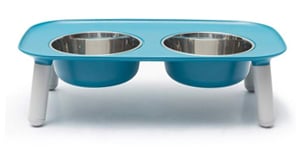
Large and giant breeds and dogs with limited mobility, especially in their shoulders, neck, or front paws, would benefits most from this type of bowl. SHORT-SIDED 
Short snouted and brachycephalic breeds may require short-sided bowls to be able to eat properly. HIGH-SIDED .jpg?width=220&name=big-country-raw-large-bowl-3%20(1).jpg) Ruffwear
Ruffwear Messy eaters need high-sided dishes to avoid making a bigger mess than necessary. Seasonal Changes
Don't Stop Training
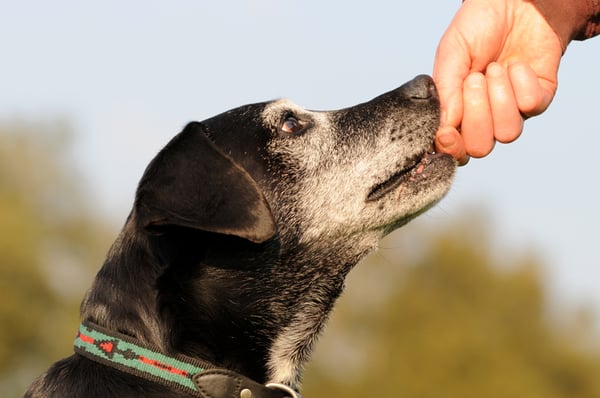
Make Mealtime Fun
Supplements for Senior Dogs
SYMPTOM SOLUTION BENEFITS SKIN AND COAT  Pet-Tek Salmon Oil
Pet-Tek Salmon Oil Helps relieve dry skin and improves coat quality. Provides a natural source of EPA and DHA. MOBILITY  NaturVet ArthriSoothe
NaturVet ArthriSoothe Protects connective tissues that support joint function from natural wear and tear. DENTAL  PlaqueOff
PlaqueOff Softens plaque and tartar and reduces oral bacteria. ORGAN FUNCTION 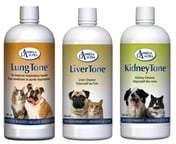 Omega Alpha Lung, Liver or Kidney Tone
Omega Alpha Lung, Liver or Kidney Tone Removes toxins and improves normal function of the organs. EYE HEALTH  NaturPet Vision Care
NaturPet Vision Care Reduces irritation, and prevents ocular degeneration. DIGESTION  Baci+ 3n1
Baci+ 3n1 Supports gastrointestinal health by boosting and maintaining healthy gut bacteria.
We do not recommend trying all of these supplements at once. Supplements can be rotated, used seasonally, or just as needed.When Should You Be Concerned About Signs of Aging?

Source: https://blog.homesalive.ca/dog-blog/dog-food-for-senior-dogs
0 Response to "Raw Food Diet for Old Dogs"
Post a Comment